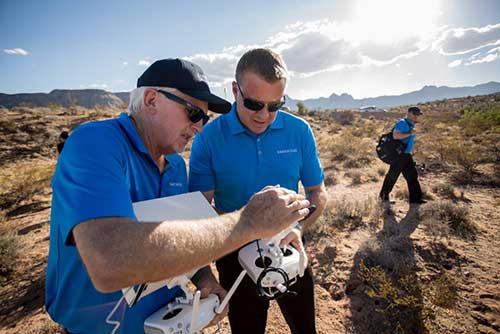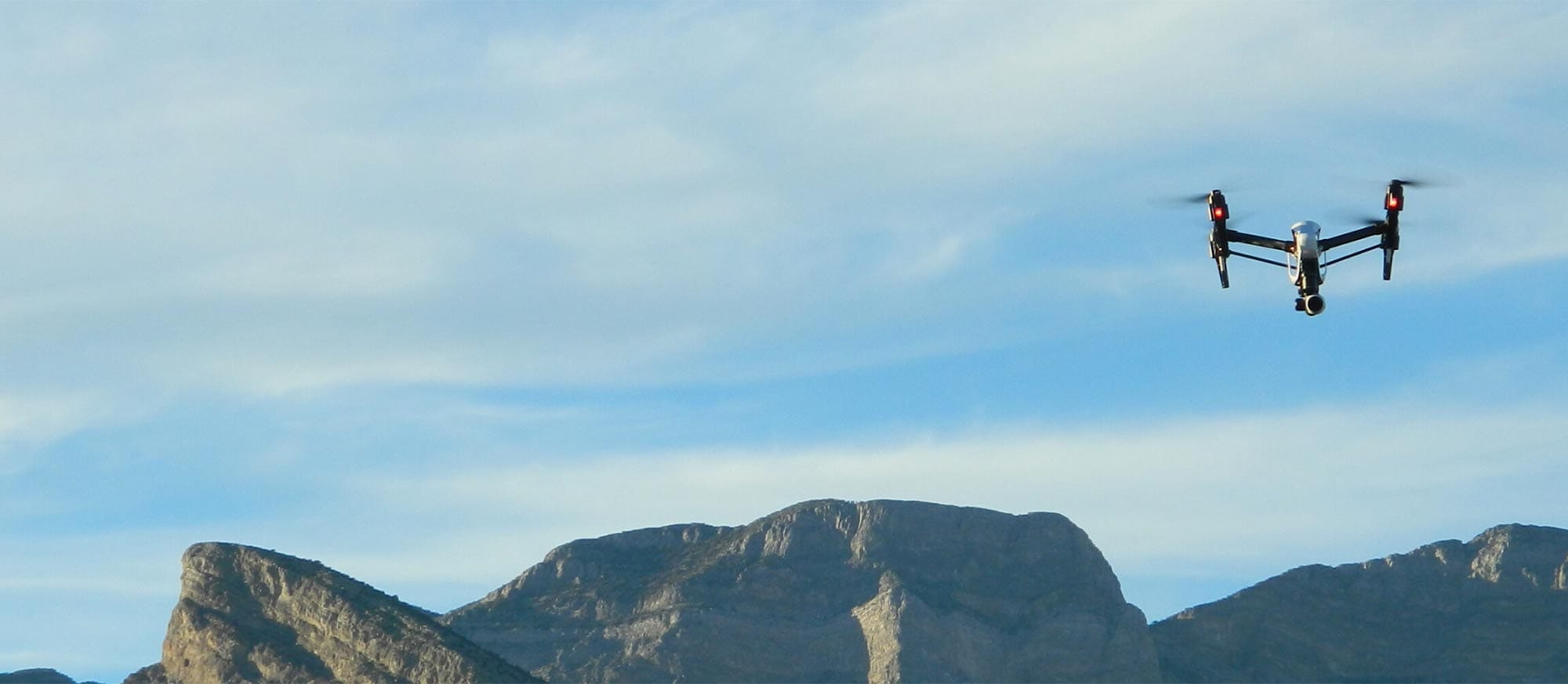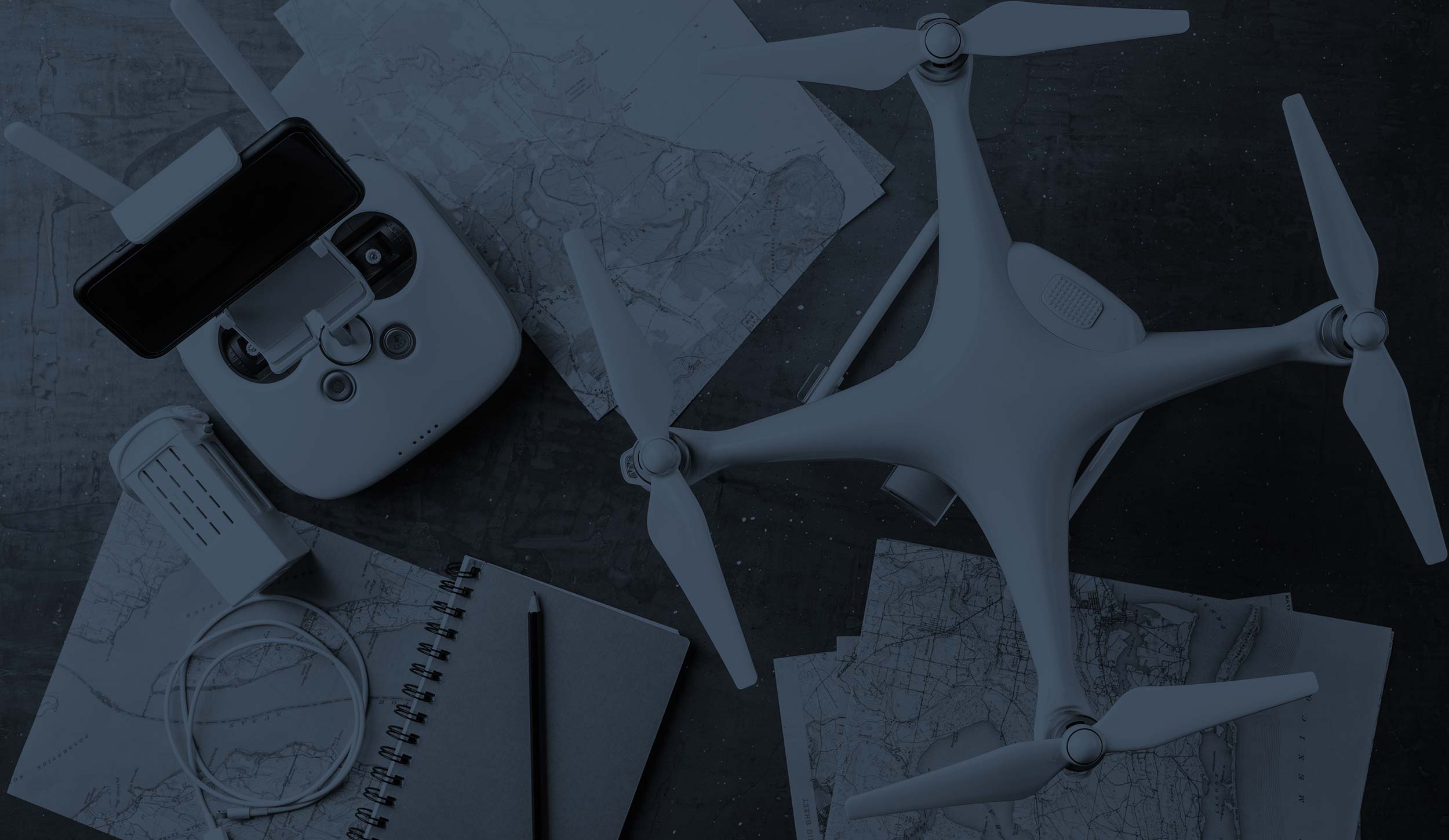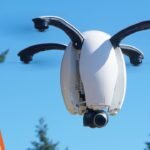The Evolution of Drones
Origins of Dart Drones
Drones, commonly known as unmanned aerial vehicles (UAVs), have come a long way since their inception. It’s fascinating to reflect on how far the technology has evolved—and Dart Drones are a prime example of this evolution. The roots of Dart Drones can be traced back to the desire for better aerial surveillance and the need for innovation in various sectors. Initially, drones like the early military UAVs were designed primarily for reconnaissance. As technology advanced, these flying machines morphed into more complex systems capable of diverse functionalities. In the beginning, Dart Drones served military applications, allowing armed forces to keep an eye on hostile territories without putting human lives at risk. This revolutionary approach made way for advancements in drone technology that spilled over into commercial and civilian use. For instance, did you know that the first-ever drone to be designed for civilian use was the Honeywell RQ-16 T-Hawk, introduced in 2005? Common features from those early days included:
- Remote Control: Drones were primarily operated via remote controls, keeping pilots safely grounded.
- Basic Camera Systems: Early models featured basic cameras primarily used for surveillance.
Fast forward to today, and Dart Drones have carved out a niche for themselves in the commercial market, providing innovative solutions across multiple sectors. The evolution truly reflects the human spirit of exploration and innovation.
Advancements in Drone Technology
Now, let’s dive deeper into how the advancements in drone technology have shaped Dart Drones as we know them today. With ongoing research and development, the functionality and the capabilities of drones have expanded exponentially. A few key advancements include:
- Enhanced Flight Stability: Drones now come equipped with state-of-the-art stabilization technologies, allowing for smooth flights even in windy conditions. This has made them particularly useful in aerial photography and surveying.
- High-Resolution Cameras: The evolution from basic camera systems to high-definition cameras with stabilizers has transformed how we capture aerial imagery. Whether it’s for a wedding shoot or a real estate listing, the quality of photos and videos taken by Dart Drones is simply stunning.
- Autonomous Flight Capabilities: Modern drones are increasingly employing GPS technology and advanced algorithms, allowing them to navigate autonomously. For instance, Dart Drones can now be programmed to follow specific flight paths automatically, ensuring precision and reducing the workload for the pilot.
- Improved Battery Life: The transition from bulky batteries to lightweight lithium polymer (LiPo) batteries has significantly increased flight times. This means less downtime and more time capturing those breathtaking views!
- Collision Avoidance Systems: Safety is paramount in drone technology. Today’s drones come equipped with sophisticated sensors that detect obstacles in their flight path, drastically reducing the risk of crashes.
- Commercialization and Regulation: As technology has evolved, so have the regulations governing drone use. Dart Drones, in conjunction with regulatory bodies, have set forth guidelines to ensure safe flying practices, reflecting a commitment to using this technology responsibly.
- User-friendly Interfaces: With the evolution of drone technology, user interfaces have become much more intuitive. Many Dart Drones are designed with beginners in mind, allowing you to pilot them easily with just a smartphone app.
The Impact of Technological Milestones
Reflecting on these advancements, it’s inspiring to see how they not only enhance the capabilities of Dart Drones but also broaden their applications across various industries:
- Real Estate: High-resolution aerial images help agents show properties from angles that ground-level photos simply cannot.
- Agriculture: Farmers can utilize advanced drones equipped with multispectral cameras to monitor crop health effectively and make informed decisions. The ability to gather and analyze data has changed the way farming is done.
- Disaster Management: In emergency situations, teams can deploy Dart Drones to assess damage quickly and deliver essential supplies to inaccessible areas, showcasing their life-saving potential.
Conclusion
The evolution of Dart Drones is a testament to the rapid progression of technology and its real-world applications. From their origins rooted in military surveillance to becoming indispensable tools in sectors like photography, agriculture, and disaster management, drones continue to redefine how we interact with the aerial world. As we stride into the future, you can expect even more exciting advancements that will push the boundaries of what Dart Drones—and drones in general—can achieve.

Dart Drones in Action
Applications in Photography
Dart Drones have carved a unique niche in the world of photography, transforming how we capture and experience stunning visuals. Imagine having the ability to hover above a breathtaking landscape or film an event from angles that only nature itself once witnessed! The applications of Dart Drones in photography are vast and varied, allowing both professionals and enthusiasts to explore creative avenues previously thought impossible. One exciting application is in the field of real estate. Agents are increasingly turning to Dart Drones to showcase properties from aerial perspectives. This not only highlights the property itself but also the surrounding environment. For example, a good aerial shot can display how close a home is to parks, lakes, or schools—an invaluable asset during the buying process. Here are some noteworthy benefits of using Dart Drones for real estate photography:
- High-Quality Imagery: Equipped with high-resolution cameras, Dart Drones capture stunning details, giving prospective buyers a full picture of what they’re considering.
- Unique Angles: Instead of standard ground-level photos, you can showcase the entire property and its landscape, which adds a layer of appeal.
- Increased Engagement: Listings with aerial photographs tend to attract a higher number of views compared to traditional photos, enhancing the chances of a sale.
Moreover, Dart Drones have become staples at weddings and events. Picture this: a couple exchanges vows with a breathtaking sunset as their backdrop, and a drone captures every heartfelt moment from the sky. The ability to get creative angles, such as circling around the couple during their first kiss or following the wedding party during the reception, adds a special touch that ground photographers often can’t replicate. Some popular uses in event photography include:
- Dynamic Video Footage: Capture mesmerizing cinematic videos that can be turned into highlights, making the event unforgettable.
- Group Shots: Need a photo of the entire wedding party? A drone can soar above and provide that grand group shot.
And here’s a little anecdote to illustrate this: At a recent outdoor wedding I attended, the couple hired a Dart Drone service to capture their special day. The footage resulted in breathtaking shots of the ceremony, showcasing the stunning natural scenery around them. It wasn’t just a video; it told their love story from above!
Uses in Search and Rescue
Beyond their captivating visual capabilities, Dart Drones have proven to be incredibly valuable in search and rescue operations. This technology is particularly impactful in emergency situations where time is of the essence, making it an indispensable tool for first responders and rescue teams. Imagine a scenario where a hiker goes missing in a dense forest. Instead of conducting a lengthy ground search that can take hours or even days, rescue teams can deploy Dart Drones to scan large areas from above quickly. Here’s how Dart Drones shine in these critical scenarios:
- Rapid Area Coverage: Drones can travel over vast geographical areas faster than ground teams, significantly improving the chances of locating a missing person.
- Real-Time Data Streaming: Equipped with high-definition cameras and thermal imaging, Dart Drones can send live video feeds back to command centers. This allows rescue teams to make informed decisions based on real-time data.
- Access to Difficult Terrain: Drones can easily navigate challenging environments like mountains or disaster-hit areas where traditional search and rescue methods may struggle.
One striking example involved the use of Dart Drones during the Colorado floods. As emergency crews worked day and night to locate missing individuals, drones overhead provided critical surveillance and mapping of inaccessible areas, allowing ground teams to focus their efforts where it counted. In cases of natural disasters, Dart Drones have also been deployed to assess damage and prioritize rescue operations. The drone’s ability to measure the extent of destruction from above can save precious seconds when determining where to send resources and aid.
Combining Creativity with Practicality
The combination of artistic expression in photography and life-saving potential in search and rescue highlights the versatility of Dart Drones. This technology connects a range of industries—from real estate to emergency response—showcasing everything drones can do. As someone who’s followed drone development for years, witnessing both sides—the creative arts and vital rescue missions—brings to light the profound impact these tools have on society. They are not just tech gadgets; they are assets that facilitate storytelling while also having the capacity to save lives.
Conclusion
The multifaceted uses of Dart Drones in both photography and search and rescue illustrate the incredible versatility of this technology. As advancements continue, you can expect these applications to become even more seamless and effective, leading to new creative opportunities and life-saving potential. So, whether you’re capturing beautiful moments or aiding in critical missions, the significance of Dart Drones in action cannot be overstated. Embrace the possibilities—it’s an exciting time to explore the skies!

Safety and Regulations
FAA Guidelines for Drone Pilots
Navigating the world of drones requires not just technical know-how, but an understanding of the safety and regulatory landscape surrounding their use. In the United States, the Federal Aviation Administration (FAA) has established clear guidelines for drone pilots to ensure both the safety of the skies and the integrity of drone operations. These regulations specifically pertain to recreational and commercial UAV use. For every aspiring or current pilot, familiarizing yourself with the FAA guidelines is crucial. Here’s a breakdown of essential regulations you should be aware of:
- Registration:
- All drones weighing more than 0.55 pounds (around 250 grams) must be registered with the FAA. This process is straightforward and can be done online.
- Registered drones must display the unique registration number assigned to them.
- Flight Operations:
- Drones must be flown below 400 feet and remain within the pilot’s visual line of sight.
- It’s prohibited to fly near airports or in controlled airspace without proper authorization.
- Avoiding Hazards:
- Pilots should stay clear of flying over groups of people, stadiums, or moving vehicles.
- Always check the weather conditions before taking off to ensure a safe flight.
- No Unauthorized Payloads:
- Using drones to carry items for compensation or hire is forbidden without specific certifications.
- Night Flying:
- Flying at night requires special lighting on the drone and further considerations—only certified pilots can engage in this kind of operation.
A personal experience comes to mind that emphasizes the importance of these guidelines. A friend of mine, an avid drone photographer, once planned to shoot sunset landscapes on a beach. He was excited until he learned about local restrictions regarding drone use near crowded public areas. Instead, he adjusted his plans to fly earlier in the day when fewer people were around, demonstrating how understanding regulations can lead to more responsible drone usage. Moreover, the FAA encourages pilots to educate themselves continually about drone rules, including keeping up with any changes that may arise. Joining local drone clubs or online forums can provide valuable resources and insider knowledge that keeps you informed.
CAA Regulations in the UK
Turning our attention across the pond, the UK’s Civil Aviation Authority (CAA) also maintains strict regulations governing drone operations. These rules aim not only to ensure safety but also to uphold public trust in drone technology. Similar to the FAA, the CAA requires registration and adherence to specific guidelines. Here are crucial components of the UK’s drone regulations:
- Registration:
- Since 2019, all drone operators in the UK must register with the CAA if their drone weighs over 250 grams.
- The operator is then issued an Operator ID that must be displayed on the drone.
- Pilot Competency:
- To fly drones that weigh more than 250 grams, pilots are required to pass a theory test and obtain a Flyer ID.
- This ensures that operators understand the relevant airspace and safety regulations before taking to the skies.
- Flight Restrictions:
- Similar to the FAA, flying above 400 feet is prohibited, and pilots should maintain visual line-of-sight while operating their drones.
- Drones cannot be flown within 1 km of an airport’s boundary and should avoid air traffic zones unless permission is granted.
- Privacy Considerations:
- The CAA emphasizes respecting other people’s privacy. Capturing images or videos of individuals without their consent can lead to further legal ramifications.
- Night Operations:
- Night flying is permissible, but drones must be equipped with lights that make them visible to others.
Reflecting on the importance of these regulations, there’s a story that highlights the value of compliance. Some drone enthusiasts had planned a group flying session in a nearby park, only to realize that they had ventured into a restricted area near an airport. They quickly adjusted their location after checking the regulations, emphasizing the need for pilots to be well-informed and proactive about where they fly.
Navigating Safety and Regulatory Compliance
Both the FAA and CAA guidelines share a common goal—ensuring safe and responsible drone operations. Nevertheless, there are critical differences on either side of the Atlantic, making it essential for pilots to be familiar with the regulations that pertain to their specific region. Here are some practical tips to help you stay compliant with the rules:
- Stay Informed: Sign up for newsletters from the FAA or CAA, and regularly visit their websites for updates on regulations or policy changes.
- Use Apps: Many drone-specific apps can help you understand airspace restrictions, weather conditions, and other crucial operational parameters.
- Be Prepared: Before each flight, double-check that you have registered your drone, obtained the necessary IDs, and reviewed the specific regulations that apply to your flight area.
Conclusion
The regulations set forth by the FAA and CAA serve as essential frameworks that guide drone operations, ensuring safety not just for the pilots but for everyone sharing the airspace. Understanding and adhering to these regulations not only minimizes the risk of incidents but enhances the drone flying experience. By staying compliant, you empower yourself to enjoy this thrilling hobby or profession while contributing positively to the growing community of responsible drone pilots. Remember, knowledge is power, and in the world of drones, it ensures you fly safely!

Training with Dart Drones
Pilot Certification Programs
Stepping into the world of drones is an exciting venture, but with great excitement comes the need for adequate training. Whether you’re a hobbyist or aspiring to take on commercial drone operations, pilot certification programs are essential components of a responsible drone flying experience. Dart Drones offers certification programs tailored to equip you with the skills and knowledge necessary to fly safely and efficiently. Why should you consider pursuing a pilot certification program? Here are some compelling reasons:
- Skill Acquisition: These programs teach you the fundamentals of drone operation, including flight mechanics, navigation, and the practical applications of drone technology.
- Regulatory Knowledge: Knowing the Federal Aviation Administration (FAA) or Civil Aviation Authority (CAA) regulations is crucial. Certification programs often include detailed explanations of these rules, ensuring you’re well-informed.
- Safety Protocols: Training emphasizes safety protocols and risk management, equipping you with the skills to handle emergencies and challenging flying conditions.
Dart Drones provides a range of certification options depending on your goals. For instance, the Part 107 Remote Pilot Certification course is a popular choice for those looking to use drones commercially in the U.S. This comprehensive program covers:
- Airspace Classification: Learn about different classes of airspace and operational limitations.
- Weather Effects: Understanding how weather conditions can impact drone performance is crucial for safe flights.
- Navigation Skills: Gain hands-on experience with navigation techniques.
One of my friends, who is passionate about aerial photography, took a certification program with Dart Drones. He recalls how the training not only enhanced his flying skills but also gave him the confidence to operate responsibly and legally. The knowledge he gained made him a better pilot, and now, with his credentials in hand, he offers drone photography services professionally.
Simulator Practice Sessions
While the thrill of flying a drone can be deeply exhilarating, actual flight experience is only part of the equation. Dart Drones emphasizes the importance of using flight simulators as an effective training tool. Simulator practice sessions allow aspiring pilots to hone their skills in a safe, controlled environment before they even take to the skies. Why are simulator practice sessions an invaluable part of drone training? Let’s explore some benefits:
- Safe Learning Environment: Simulators eliminate the risks associated with early flight attempts. You can make mistakes without any real-world consequences—no damage to the drone or potential harm to yourself or others.
- Realistic Scenarios: Many simulators offer realistic simulations, including challenging weather conditions, emergencies, and diverse environments, allowing pilots to prepare for various flying situations.
- Skill Development: Pilots can master their control inputs, understand how the drone responds to commands, and practice maneuvers like takeoff, landing, and navigating obstacles effectively.
- Cost-Effective: Instead of risking damage to an actual drone, simulator sessions are a more affordable option, especially for newcomers just starting their journey.
For example, let’s say you’re worried about your ability to handle a malfunction mid-flight. By practicing in a simulator, you can experience that situation without the pressure of disaster looming over you. You’ll learn how to react calmly and effectively, making for a more prepared pilot when you do go airborne. I can recall a group training session I experienced at a local flight school. The instructor had us use simulators to practice flying in different conditions, including high winds. The simulator allowed us to feel how our inputs affected the drone in real time, improving our coordination and confidence. When we transitioned to flying the actual drones, the simulator experience made all the difference.
Combining Training Elements for Success
The combination of pilot certification programs and simulator practice sessions offers a well-rounded approach to learning. At Dart Drones, the curriculum effectively integrates these components, allowing you to transition smoothly from theoretical understanding to practical experience. Here’s a simple breakdown of how both training elements work together:
| Training Element | Focus Area | Benefits |
|---|---|---|
| Pilot Certification Programs | Regulatory and Practical | Knowledge of regulations, airspace classifications, and aviation safety. |
| Simulator Practice Sessions | Flight Skill Development | Safe practice, realistic scenarios, and maneuver mastery. |
When you embark on your drone journey with Dart Drones, you’ll find that both certification and simulator training not only prepare you for responsible flying but also enhance your enjoyment of this exciting technology.
Conclusion
Investing time in training with Dart Drones is a crucial step to becoming a competent and responsible drone pilot. Pilot certification programs lay the foundation of knowledge you’ll need, while simulator practice sessions provide an invaluable platform for skill development in a risk-free environment. Whether you’re pursuing personal interests or aiming for commercial ventures, both training aspects complement each other and set you on the path to confident flying. So, as you prepare to take off, remember that proper training isn’t just a formality; it’s a commitment to flying safely and enjoying the incredible possibilities that come with drone technology. Take that leap; you might just surprise yourself with how far you can soar!
Future Innovations
Drone Swarm Technology
As we look to the future, one of the most exciting innovations on the horizon is drone swarm technology. The concept here is mind-blowing: a fleet of drones working together as a cohesive unit, much like a swarm of bees. This technology has the potential to revolutionize various industries by enabling efficient, synchronized operations that were previously unimaginable. So, what exactly is drone swarm technology, and how does it work? Let’s break it down:
- Collective Intelligence: Swarm drones operate based on algorithms that allow them to communicate and collaborate with each other. This means they can collectively make decisions and adapt to changing conditions in real-time.
- Applications Across Industries:
- Agriculture: Swarms can monitor vast fields, providing farmers with detailed insights regarding crop health, minimizing the time required for surveillance.
- Search and Rescue: A group of drones can cover a larger area more efficiently, increasing the chances of locating missing persons or assessing disaster zones.
- Infrastructure Inspection: Rather than sending technicians up scaffolding or utilizing expensive helicopters, swarms can quickly inspect bridges, power lines, and pipelines.
An example of this technology in action occurred when a simulated search and rescue operation was conducted using a fleet of drones. These drones communicated to coordinate their search patterns, allowing them to cover ground significantly faster than individual drones could hope to achieve. The results were astounding—the time taken to locate the “missing person” was reduced by a staggering 70%.
- Environmental Monitoring: With the ability to swarm over large areas, drone fleets can rapidly gather data on environmental conditions, detect changes in pollution levels, or monitor wildlife populations. This capability enables better decision-making for conservation efforts.
As drone swarm technology advances, ethical considerations and regulations will take center stage. Ensuring that these drones operate within established frameworks will be key, but the potential benefits are enormous—from improved efficiency to enhanced safety.
Eco-friendly Drone Models
Another groundbreaking trend in the future of drones is the development of eco-friendly models. With increasing awareness about climate change and environmental sustainability, manufacturers and innovators are focusing on creating drones that minimize their carbon footprint and promote greener practices. Here’s how eco-friendly drones are paving the way for a sustainable future:
- Electric and Hybrid Power Systems: Traditional fuel-powered drones emit greenhouse gases, contributing to pollution. In contrast, eco-friendly drones utilize electric or hybrid energy systems, reducing or eliminating emissions altogether.
- Example: Companies are developing drones powered by renewable energy sources, such as solar power.
- Lightweight Materials: Innovative design practices emphasize the use of lightweight materials, reducing energy consumption during flight. Carbon fiber and biodegradable plastics are becoming popular materials in drone manufacturing, ensuring better performance without harming the environment.
- Sustainable Manufacturing Processes: Many manufacturers are adopting sustainable practices in their production lines, ensuring that the entire lifecycle of the drone—from production to disposal—minimizes environmental impact.
- Efficient Navigation and Energy Management: Advanced algorithms can optimize flight paths to reduce energy consumption. By making real-time adjustments based on weather conditions or air traffic, eco-friendly drones can maximize their efficiency.
A noteworthy personal experience involving eco-friendly drones occurred last summer during a local volunteer project focused on environmental monitoring. We utilized an electric drone equipped with sensors to collect data on local flora and fauna in a nearby forest reserve. Not only was the drone silent and energy-efficient, but its ability to provide precise data helped our team track ecological changes without disturbing the wildlife.
The Impact of Innovations
The future innovations of drone swarm technology and eco-friendly models are set to redefine the landscape of drone applications. Let’s summarize the potential impacts of these advancements:
| Innovation | Potential Impact |
|---|---|
| Drone Swarm Technology | – Enhanced efficiency in numerous industries |
| – Improved safety and response times in emergencies | |
| – Advanced capabilities for environmental monitoring | |
| Eco-friendly Drone Models | – Reduced carbon footprint with electric and hybrid systems |
| – Sustainable manufacturing minimizing environmental harm | |
| – Better data for informed decision-making on conservation efforts |
Conclusion
The exciting future of the drone industry is intertwined with innovations that promise to enhance operational efficiency and contribute positively to environmental sustainability. As we stand on the verge of adopting technologies like drone swarms and eco-friendly models, the possibilities are boundless. As a drone enthusiast, you might be inspired to think about how these advancements will shape your passion. Whether you’re interested in photography, agriculture, or environmental conservation, the future has much to offer. Remember, being part of this revolution means not only enjoying what drones have to offer today but also being conscious of how we can contribute to a greener tomorrow. Embrace these innovations as they arrive, and get ready to explore a world where drone technology continues to exceed our wildest expectations!



